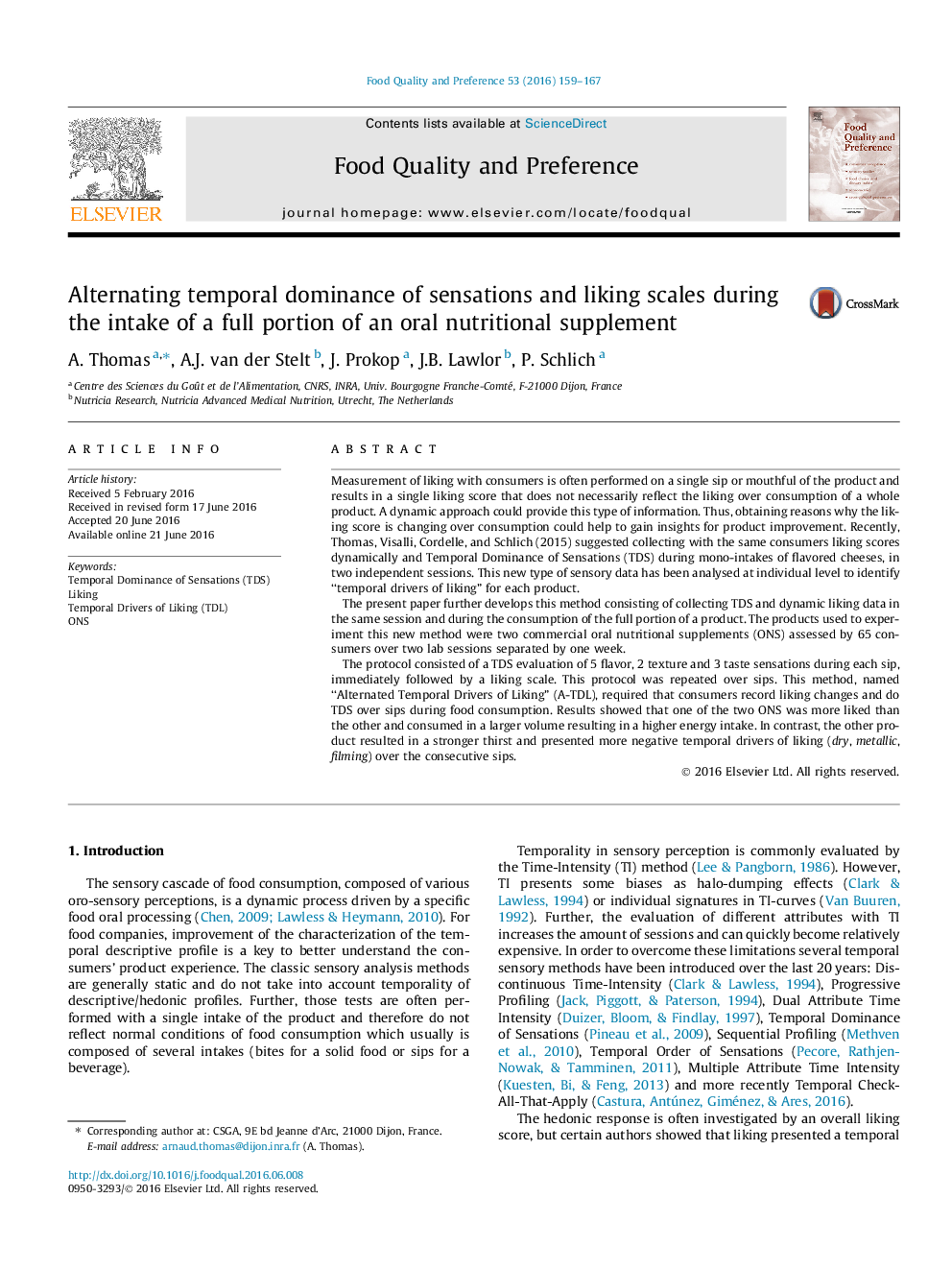| کد مقاله | کد نشریه | سال انتشار | مقاله انگلیسی | نسخه تمام متن |
|---|---|---|---|---|
| 4316895 | 1613146 | 2016 | 9 صفحه PDF | دانلود رایگان |
• A new method for collecting TDS and dynamic liking in the same session.
• A new method for studying perception and appreciation of the full portion of a product.
• A new method to identify “temporal drivers of liking”.
Measurement of liking with consumers is often performed on a single sip or mouthful of the product and results in a single liking score that does not necessarily reflect the liking over consumption of a whole product. A dynamic approach could provide this type of information. Thus, obtaining reasons why the liking score is changing over consumption could help to gain insights for product improvement. Recently, Thomas, Visalli, Cordelle, and Schlich (2015) suggested collecting with the same consumers liking scores dynamically and Temporal Dominance of Sensations (TDS) during mono-intakes of flavored cheeses, in two independent sessions. This new type of sensory data has been analysed at individual level to identify “temporal drivers of liking” for each product.The present paper further develops this method consisting of collecting TDS and dynamic liking data in the same session and during the consumption of the full portion of a product. The products used to experiment this new method were two commercial oral nutritional supplements (ONS) assessed by 65 consumers over two lab sessions separated by one week.The protocol consisted of a TDS evaluation of 5 flavor, 2 texture and 3 taste sensations during each sip, immediately followed by a liking scale. This protocol was repeated over sips. This method, named “Alternated Temporal Drivers of Liking” (A-TDL), required that consumers record liking changes and do TDS over sips during food consumption. Results showed that one of the two ONS was more liked than the other and consumed in a larger volume resulting in a higher energy intake. In contrast, the other product resulted in a stronger thirst and presented more negative temporal drivers of liking (dry, metallic, filming) over the consecutive sips.
Journal: Food Quality and Preference - Volume 53, October 2016, Pages 159–167
